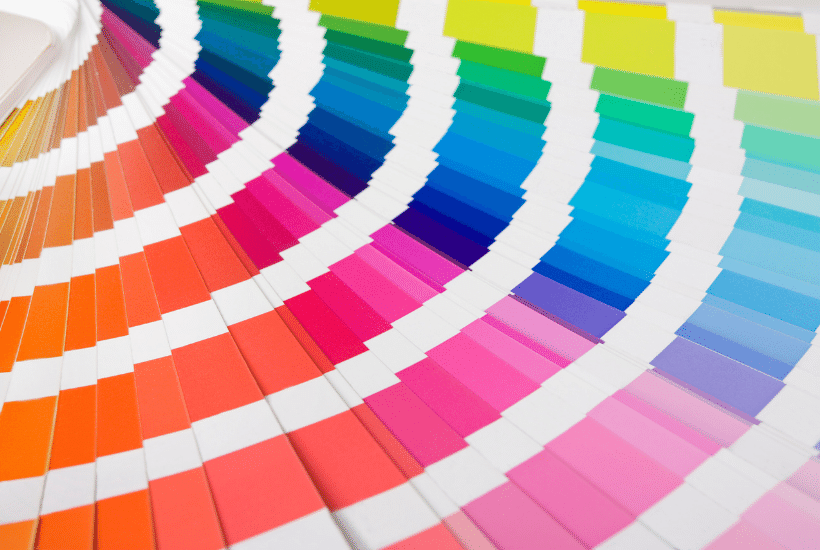Amplifying Brand Impact: Mastering Website Design and Colour Strategy
Note: This post may contain affiliate links; I may earn a commission (at no extra cost to you) if you make a purchase via my links. See my disclosure for more info.

Colour is an integral part of your brand’s narrative, an unspoken language that communicates to your audience and leaves a lasting impression. Mastering website design and colour strategy is critical for any business. It can significantly influence your audience’s perception, provoke emotions and bolster your brand recognition. Let’s delve deeper into the intriguing world of colour and its impact on website design.
Table of Contents
Boosting Brand Recognition Through Colour
Colour and brand recognition share a dynamic relationship. For instance, when you think of ‘Coca-Cola,’ the colour red instantly comes to mind, or when ‘Cadbury’s Dairy Milk’ is mentioned, the regal purple hue is hard to forget. Studies have shown that colour can increase brand recognition by up to a staggering 80%. The relationship between colour, brand recognition, and consumer confidence is undeniable and worth considering for your web design.
Emotional Resonance of Colours
Each colour embodies certain feelings and emotions. For example, greys evoke a sense of calmness, while greens signify health and growth. Blues carry feelings of trust, whereas reds are synonymous with boldness or danger. Cheerfulness and warmth are associated with yellows and oranges. As you plan your website’s colour palette, think about the emotions you want to evoke in your visitors.
Perhaps, if you run an organic food store, you may want to use earthy greens and browns. Blue is considered the safest choice as research shows 57% of men and 35% of women say it is their favourite colour!

Choosing Your Website’s Colour Palette
The visual harmony of your website is as crucial as its content. To choose a colour scheme, consider complementing colours (those opposite on the colour wheel), triadic colours (three colours 120 degrees apart on the colour wheel), or analogous colours (colours adjacent to each other on the colour wheel). Another approach is to choose one dominant colour for essential elements of your website and accent colours to highlight other crucial information.

Free tools like adobe colour CC tool (see image) can help you pick these colours. It provides a variety of colour schemes, including triadic, complementary, and analogous configurations. This enables you to find harmonious combinations that effectively communicate your brand’s story and elicit the right emotional responses. Allowing for real-time adjustments and exploration, Adobe Color CC empowers you to navigate the colour spectrum with confidence, ensuring your website is both visually captivating and aligned with your business objectives.
Understanding Colour Accessibility
While it’s important to choose a colour scheme that represents your brand and resonates with your audience, it’s equally important to consider colour accessibility. Not everyone perceives colours in the same way, and people with visual impairments or colour blindness may have difficulty distinguishing between certain colours.
Using high-contrast colour combinations can help ensure that all visitors can read and interact with your site easily. There are also various online tools available, like WebAIM’s Contrast Checker, to assist you in making your website more accessible.
Testing Your Colour Scheme
Once you’ve chosen your colour scheme, it’s essential to test it. Ask your customers or website visitors for feedback. Are the colours appealing? Are they able to navigate and find information on your site easily? Remember, your customers are your best critics and their feedback is invaluable.
Balancing Colour and Functionality
Your website should strike a balance between an appealing colour scheme and a functional design. The most visually appealing site won’t serve its purpose if users struggle to navigate it or find essential information. It’s important to ensure your colour choices enhance usability and don’t create barriers.
Conclusion
Colour is more than an aesthetic choice for your website – it’s a powerful tool that can drive user engagement and enhance your brand’s recognition. Thoughtfully chosen colours can evoke the right emotions in your audience, enhancing their connection with your brand. However, colour decisions shouldn’t be left to chance. It’s a strategic decision that requires careful planning and consideration.
If you need expert advice to navigate the world of colour in website design, contact us. Let’s bring your brand to life through a stunning and accessible colour palette.
Call to Action: Ready to colour your brand’s success story? Let our expert designers guide you! Reach out to us today for a consultation.







